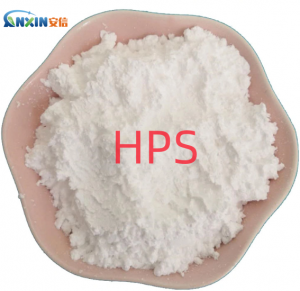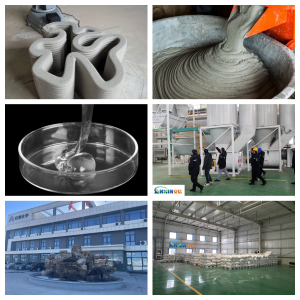Starch ethers are water-soluble polymer derivatives made from natural starch through chemical or physical modification. They are primarily used in construction as additives to retain water, thicken, improve workability, and enhance the rheological properties of materials. They are typically derived from plant starches such as corn, potato, and cassava. Ether groups are introduced through an etherification reaction, altering their solubility, stability, and thickening properties, enabling them to function in alkaline environments and complex systems.
In the construction industry, starch ethers are commonly used in dry-mix mortar systems such as tile adhesives, interior and exterior wall putty powders, insulation mortars, and gypsum- or cement-based self-leveling materials. Their usage is typically very low, typically between 0.02% and 0.1%, but they can significantly improve workability. The main mechanisms of action include:
Adjusting consistency and rheology: Starch ethers swell in water to form a viscous solution. When used in combination with other thickeners (such as hydroxypropyl methylcellulose (HPMC) and hydroxyethyl methylcellulose (MHEC), they can optimize the yield value and thixotropy of the mortar, ensuring both good flow during application and reduced sagging after standing.
Improving water retention: Modified starch molecules are highly hydrophilic, adsorbing and locking in water, reducing water absorption and evaporation from the substrate, ensuring sufficient hydration of the cement or gypsum, and improving strength and adhesion.
Preventing sagging and bleeding: In tile adhesives or vertical applications, starch ethers can improve the mortar’s anti-sagging properties. In self-leveling or thinner-viscosity materials, they can reduce bleeding and ensure a smooth surface.
Improving application feel: They make scraping and spreading smoother, reducing “knife sticking,” improving application efficiency and final product quality.
Starch ethers are often used in combination with cellulose ethers (HPMC, HEMC, and MHEC) in formulations. Cellulose ethers provide primary water retention and thickening properties, while starch ethers adjust the thixotropy and consistency of the mortar, achieving a more balanced workability. For example, in tile adhesive formulations, an appropriate amount of starch ether can reduce the excessive stringiness caused by high-viscosity cellulose ethers, making the mortar easier to apply. In putty powders, it can improve smoothness and reduce the risk of shrinkage and cracking.
In construction applications, starch ethers offer the following performance advantages:
Environmental friendliness: Made from natural plant starch, they are biodegradable and have minimal environmental impact.
Cost-effectiveness: Low usage levels yield significant improvements, reducing reliance on costly additives.
Formulation adaptability: Suitable for cement-based, gypsum-based, and mixed-base mortars, and compatible with a variety of additives.
Different starch ether types and modification methods result in varying dissolution rates, thickening capacity, alkali resistance, and stability. Therefore, in practical applications, it is important to select the appropriate type based on the formulation system, construction environment, and intended performance, and to determine the optimal dosage through testing. Starch ether is a “small dose, big effect” additive in building materials. It significantly improves mortar rheology, water retention, and workability, significantly enhancing construction efficiency and finished product quality. It is an indispensable functional additive in modern dry-mix mortar systems.
Post time: Aug-11-2025

